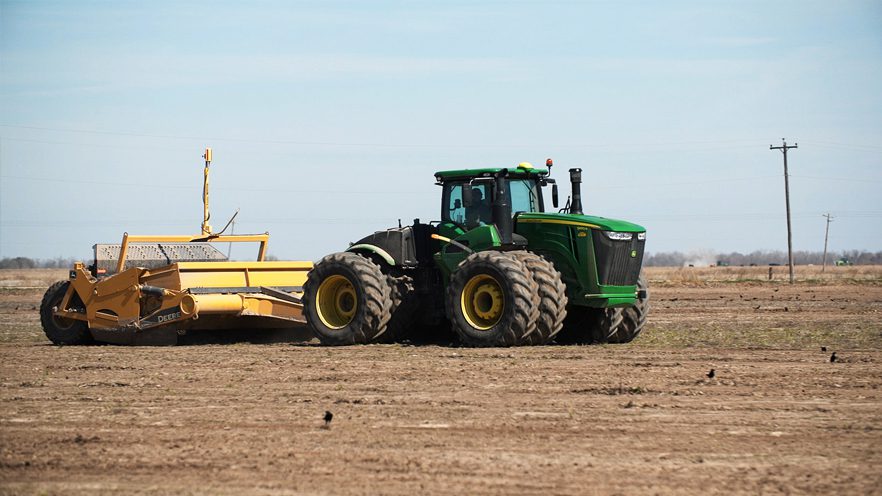Agricultural Water Conservation

To help LCRA’s irrigation operations and interruptible water customers reach the conservation goals, LCRA helps fund conservation projects through grants and House Bill 1437.
LCRA developed conservation strategies funded through HB 1437 with input from the Agriculture Water Conservation Fund Advisory Committee. The committee is a nine-member group of farmers and agricultural experts from Colorado, Wharton and Matagorda counties.
Laser land leveling cost-share program
The HB 1437 Agricultural Water Conservation Cost-Share Program provides funding to recertify previously leveled fields that have met their 15-year useful life. The funding can help with surveying, touching up permanently leveled fields and converting fields with temporary levees to permanent levees.
To qualify, fields must have been previously leveled, at least 70% irrigated with water from LCRA, and have been irrigated with water from LCRA at least twice in the past 10 years.
The application deadline for the 2025 funding cycle was March 28, 2025. If you have questions about the program, contact Senior Water Conservation Coordinator Stacy Pandey.
Leveling land reduces the average required field flood depth and increases the efficiency of water used on individual fields. More than 30,000 acres of farmland were leveled through the previous HB 1437 land leveling cost-share program from 2006 to 2013. LCRA worked with The University of Texas LBJ School of Public Affairs to complete a savings verification study of the program in 2012. Read more about the 2006-2013 land leveling cost-share program and the new land leveling recertification program launched in 2023 in the HB 1437 annual report.
Garwood Agricultural Division gate automation project
In 2020, the LCRA Board authorized a project to automate 46 main canal gate structures in the Garwood Agricultural Division over three years. This $950,000 project was partially funded by a grant from the Texas Water Development Board for more than $200,000. LCRA completed the project in 2023, fully automating all 46 structures. Read more about the Garwood gate automation project in the HB 1437 annual report.
Gulf Coast Agricultural Division gate rehabilitation and control project
LCRA completed the first phase of the Gulf Coast gate rehabilitation and control project with a $257,000 grant from the U.S. Bureau of Reclamation. Phase 1 included automating and providing centralized control of 11 check gate structures at the head of the eastern canal system in the Gulf Coast Agricultural Division.
LCRA launched the second phase of the gate rehabilitation project in 2013, which completed automation of the remaining nine main check gate structures on the main line of the eastern canal system and automated five gates regulating the delivery of water to a firm industrial customer. Phase 2 was partially funded by a $100,000 grant from the Texas Water Development Board.
In 2014, LCRA launched the third phase of the gate rehabilitation project, which began automation of the western section of the Gulf Coast canal system. LCRA launched a fourth phase of gate rehabilitation in 2016 to continue along the western canal system and a fifth phase in 2018 to complete automation of main canal gate structures on the eastern canal system. Phase 5 was also partially funded by a $90,000 grant from the Texas Water Development Board.
LCRA completed automation of main check gates essential to the operating the entire Gulf Coast Agricultural Division by 2019. Read more about the Gulf Coast Agricultural Division gate modernization project in the HB 1437 annual report.
Garwood Agricultural Division measurement project
The Garwood volumetric measurement project was a conservation project to install or rehabilitate about 400 water measurement and structures on existing canals and field laterals in the Garwood Agricultural Division. It also involved rehabilitating 85 miles of canal laterals to facilitate LCRA control of all measurement structures. LCRA completed the project in 2012. The majority of the project was funded through HB 1437 with help from a $99,000 Texas Water Development Board grant.


Social Media